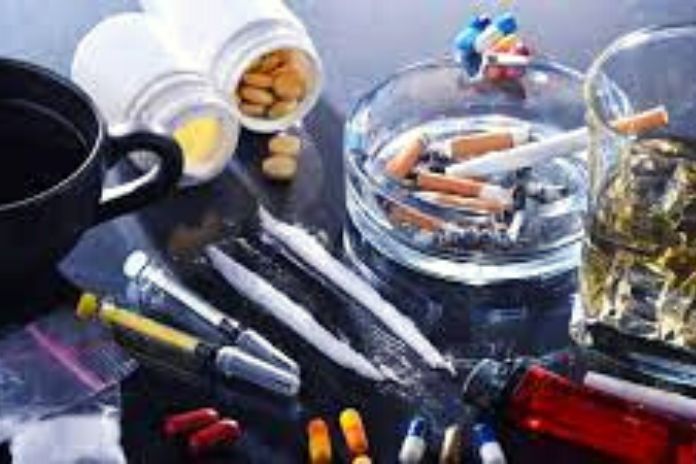Addiction to drugs teaches us that in the face of prolonged consumption, it will be necessary to increase the dose to obtain the same effect. It is the process that can lead to an addiction. Addiction to drugs can be defined by analogy with any situation in everyday life. For example, a person living in front of a nightclub will have difficulty sleeping because of the noise during the first few days.
Then she will get used to it and will be able to fall asleep. This is the same process that happens with drug addiction. At first, a certain substance will suffice to have certain effects, but more and more will be needed. Let’s see why it’s so dangerous.
What About Drug Addiction?
If something characterizes us human beings, it is the ability to learn and adapt. At varying levels of complexity, many of our experiences leave memory traces that guide action for future situations. In this sense, one of the most primitive levels of learning is known as habituation.
It refers to diminishing a response in the presence of a stimulus that is presented repeatedly. However, drug addiction, also called tolerance, is a situation in which the same amount of drug, consumed repeatedly, begins to reduce its effects. That is, the person “gets used” to the psychoactive substance. To obtain the same effect, increasing quantities will be required.
Features
The following aspects characterize addiction to drugs:
- It happens at the central nervous system level: it is not due to an adaptation of the senses.
- The person’s fatigue cannot explain: when there is a situation of fatigue, there is a decrease in response.
- It’s an innate response.
- It is a specific stimulus: an increase and a decrease are due to a particular stimulus.
- There may be a recovery of response: Over time, a lost or diminished response can return to its initial state.
In this sense, it is possible to say that addiction has benefits. In other words, it allows us to get used to certain stimuli (e.g. noise) without worrying repeatedly. However, drug addiction carries a certain danger because it is managed through an indirect rule: more substance, less effective. More substance is needed to maintain or achieve certain sensations.
Types Of Addiction
There are different types of addiction. Let’s go through them.
Addiction To Pharmacokinetic Drugs
When we talk about pharmacokinetic effects, we are referring to the effects of the organism on drugs. What does the body do with the substance in absorption, synthesis and elimination? This drug addiction occurs after repeated consumption when the body accelerates the degradation processes.
Habits Related To Pharmacodynamics
In this case, we refer to the drug’s action on the body from the drug-receptor interaction. With repeated use of the substance, the drug receptors get used to it or get used to it, so they need larger doses each time.
Cross Tolerance
It refers to that process by which a person who repeatedly consumes a certain substance will also show tolerance or habituation to similar substances. For example, heroin and morphine.
Reverse Tolerance
It is that situation in which, with lower doses, the same effect as a substance is obtained. That is, it goes in the opposite or expected direction of what happens with habituation. this may be explained by the accumulation or reserve of the drug in some tissues, which is subsequently released. In other cases, it is due to the increased sensitivity of the receptor. Reverse tolerance indicates the possibility of overdose phenomena occurring without increasing regular consumption.
How Is Addiction Different From Addiction?
Getting used to it encourages you to consume larger amounts to get the effect. Therefore, it could lead to addiction and, ultimately, addiction or problem use. To dig a little deeper, we have to say that the following characteristics characterize addiction:
- Tolerance.
- Loss of control.
- Stereotyped consumer habits.
- Typical symptoms of withdrawal syndrome.
- It requires treatment to get out of this situation.
- Intense and persistent desire to consume a substance, also known as craving. It is different from addiction, which involves non-compulsive craving.
The Road To Addiction
Addiction does not arise overnight. It is a complex and sustained process that has gone through several stages. Among these phases, we find, according to the proposal of Becoña Iglesias, the following:
- Predisposition: some factors influence and predispose to consumption. That is, they increase or decrease the possibility of a person starting the path.
- Knowledge: it is about knowing the effects produced by a specific drug. It also implies the availability of the substance.
- Experimentation: The previous point can lead people to decide to come into contact with drugs.
- Consolidation: it is the transition from use to abuse.
- Abandonment or retention: depending on the consequences, the person will stay in consumption or move away from it.
- Possible relapse: when the addiction is established, it isn’t easy to get out of that situation.
This Is A Problem Not To Be Underestimated
In the beginning, almost all consumption begins in small quantities. For those just starting in the world of drugs, a small dose is enough to reach that state of pleasure or euphoria. However, habit shows us that what seems little or insufficient results in greater demand from the body, which wants to repeat the pleasant experience.
So it’s important to appreciate the beginnings. It will also be crucial to admit that you have a problem. It’s about knowing how the body works when interacting with drugs to avoid unwanted and harmful consequences. Prevention requires not only knowing the effects but also paying attention to other factors, such as the age of onset and circumstances.
Read Also: Physical Activity To Control Diabetes
